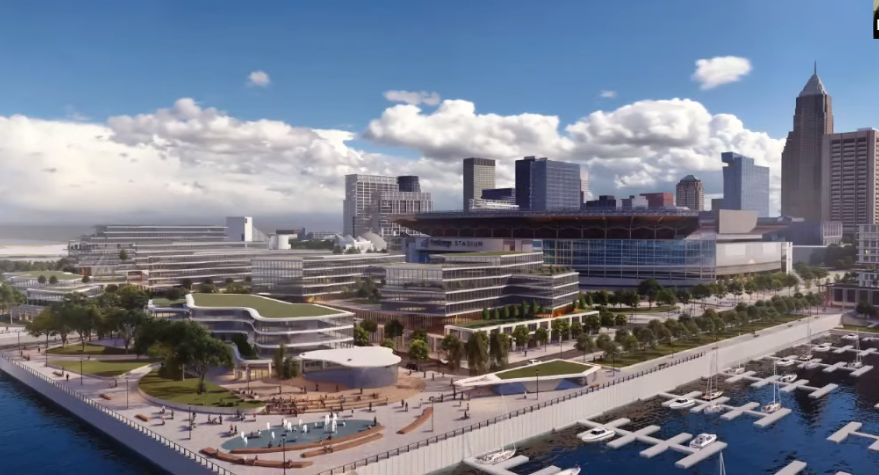CLEVELAND — The City of Cleveland has approved funds to begin studying a proposal to revamp the lakefront near FirstEnergy Stadium.
The $2.5 million, along with $2.5 million in state funds earmarked for the project, will go toward the study that is slated to begin in late 2021.
Earlier this year, Cleveland Browns ownership submitted its vision for extending the mall from City Hall across the shoreway to the Lake Erie waterfront. The vision called for a landbridge to be built over the shoreway and train tracks. It would extend from the roof of the Cleveland Convention Center to the Great Lakes Science Center, creating a path of green space from the convention center directly to Lake Erie. The bridge would include green space and walking paths.
The plan would also call for a potential removal of parking along the lake, and could be replaced with retail, office or apartment space. Lanie McKinnon, an architect at Nelson, Byrd and Woltz, said that parking could potentially be moved to an underground garage, under the greenspace.
"Lakefront connectivity has long been a complicated issue for our region, and a long-term solution has been elusive,” said Jimmy and Dee Haslam in a statement earlier this year. “Our preliminary vision, led by a landscape architect with experience around the world, intends to create a transformational pedestrian pathway unlocking public spaces and significant development opportunities on the lakefront. It would create year-round destinations accessible to our entire region, provide direct connections to nature and result in substantial economic development while driving density and engagement in the lakefront neighborhood our community shares.”
The study will consider the impact on traffic from pedestrians, automobiles, rail and mass transit, according to Cleveland City Council, and is expected to be completed later in 2022.



